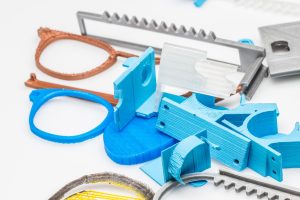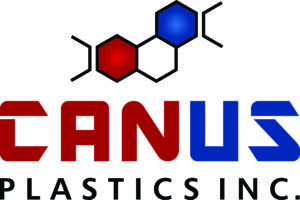Eliminating Burrs and Rough Edges in Machined Plastic Parts

Burrs and rough edges can be pesky problems when working with machined plastic parts. When you craft a product, the last thing you want is the discomfort or poor fit caused by these imperfections. Smooth edges aren’t just about looks; they play an important role in ensuring components fit together easily and function flawlessly. Imagine building a puzzle where the pieces don’t fit neatly—it’s frustrating and ineffective. The same principle applies here, making the quest for smooth edges a key priority in machining.
The art of finishing doesn’t end with cutting the plastic pieces. This is where assembly services come into the picture, acting as the unsung heroes that deliver a polished final product. They’re not just about putting parts together; they’re a crucial checkpoint for quality. During assembly, any remaining rough areas can be identified and sorted out, ensuring the final product meets both appearance and performance standards. By embracing thorough assembly practices, you help ensure each piece is ready to serve its purpose effectively.
Causes of Burrs and Rough Edges
Understanding what causes burrs and rough edges is the first step to combatting them. Burrs—those pesky little bits sticking out from the edges—are typically formed during the cutting process. Whether it’s due to a dull tool or incorrect machine settings, these imperfections can arise under a variety of circumstances. Rough edges occur in much the same way and can lead to further assembly complications.
Several factors can cause these problems:
1. Tool Wear: When tools get dull, they stop cutting cleanly, leaving unwanted material behind.
2. Improper Cutting Techniques: The way a machine cuts can produce different results; rushing the process often leads to roughness.
3. Incorrect Machine Settings: Even a small error in calibration can create significant issues.
Identifying and mitigating these causes prevents further production issues. Regularly maintaining and checking equipment can largely reduce the likelihood of encountering burrs and rough edges. By addressing the root causes, high-quality and cleanly finished parts become a more consistent reality.
Techniques for Eliminating Burrs and Rough Edges
Achieving a pristine finish on plastic parts involves several effective techniques. These methods focus on polishing, deburring, and maintaining equipment.
1. Deburring Methods:
– Manual Deburring: An operator uses tools like files, scrapers, or sandpaper to remove burrs by hand. This approach suits small parts or those requiring a delicate touch, though it can be time-consuming.
– Mechanical Deburring: Machines such as tumblers and vibratory finishers assist by agitating parts with abrasive media. This is perfect for handling larger orders efficiently.
– Thermal Deburring: This process involves using heat or chemical reaction to burn away burrs. It’s suitable for removing tiny imperfections without sacrificing accuracy.
2. Finishing Processes:
– Polishing: Buffing surfaces with fine abrasives or compounds brings out a glossy sheen.
– Sanding: Handheld sanders or sandpaper smoothen edges, preparing them for assembly.
– Trimming: Sharp tools refine edges, cutting away any remaining rough spots.
3. Proper Machine Maintenance:
Regular care of cutting tools is vital. Keep blades sharp and machines well-calibrated to prevent burrs from forming. This maintenance minimizes errors that cause roughness, ensuring parts fit seamlessly during assembly.
Ensuring Quality in Assembly Services
Opting for professional help during assembly can make a remarkable difference in achieving high-quality finishes.
– Importance of Professional Assembly Services: Experienced technicians spot imperfections that might otherwise go unnoticed. Their expertise guarantees that pieces align correctly and feel smooth to the touch.
– Quality Checks: During assembly, these checks are essential:
- Check all edges for remaining burrs.
- Use calipers or gauges to ensure uniform thickness.
- Inspect the fit of each part in assemblies.
These inspections help maintain a high standard, preventing defects from slipping through the final stages.
– Training Matters: Skilled workers are key to zeroing in on problems right away. Training keeps them updated on the newest methods for deburring and polishing, adding an extra layer of reliability to the whole process.
Maintaining Long-Term Quality Standards
Commitment to continual improvement is crucial for sustaining high standards.
– Continuous Monitoring: Regular audits of machined parts catch defects early, before they multiply. By keeping an eye on each phase of production, you can address issues precisely when they occur.
– Employee Training: Invest in workshops that bring staff up to speed on the latest trends in machining. Updating their knowledge about new finishing techniques keeps operations efficient and effective.
– Setting Up a Feedback Loop: Implementing a feedback loop opens communication among team members. It encourages sharing insights and suggestions, enhancing methods and preventing repeated mistakes.
The Path to Perfect Plastic Parts
Creating plastic parts without burrs or rough edges isn’t just about immediate fixes. It’s an ongoing journey. Each technique applied contributes to a cleaner finish and better performance. By integrating consistent checks, deburring, and training, the process becomes more streamlined and reliable. And while the path isn’t without its challenges, embracing innovation and vigilance ensures that smooth, well-machined plastic parts are achievable for even the most intricate projects.
Achieving smooth, well-machined plastic parts involves several careful steps and professional expertise. Utilize the assembly services at Canus Plastics Inc. in Ottawa to ensure each piece meets high-quality standards. From tackling rough edges to ensuring perfect fits, our team provides the attention to detail necessary for flawless results. Discover how partnering with us can enhance your plastic parts’ quality and performance.

